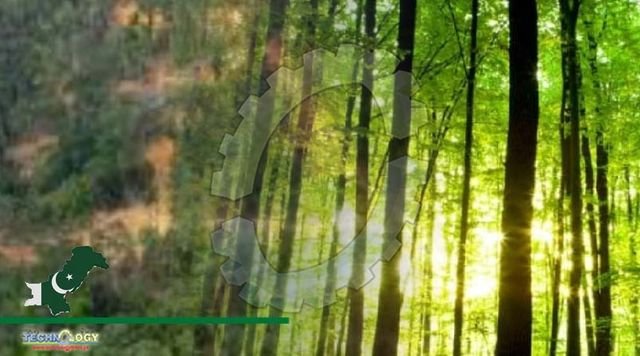Janos Pasztor has suggested that Pakistan should prioritize SRM measures aimed at reducing the impacts of global warming on natural hazards and disasters.

Janos Pasztor, Executive Director of the Carnegie Climate Governance Initiative (C2G), has suggested that, in the face of rising global temperatures and the devastating effects of climate change, Pakistan should prioritize solar radiation modification (SRM) measures aimed at reducing the impacts of global warming on natural hazards and disasters.
In an exclusive interview on managing the risks of a global temperature overshoot beyond 1.5 degrees Celsius, the C2G Executive Director stated that the world was getting hotter and would soon exceed 1.5 degrees. “There was a need to find solutions,” he added.
Pastzor stated that “government is the key” to achieving this goal, which was much broader than the traditional definition of it. It takes new techniques, as well as diverse individuals and groups working together, to achieve success.
According to the sustainable development expert, stakeholders did not need to work on carbon dioxide reduction (CDR), which was on the agenda of most governments highlighting net zero ambitions. Impacts of global warming include rising sea levels, more frequent and severe heat waves, more intense storms and heavy precipitation, and changes in the distribution of plant and animal species.
He stated that the SRM consisted of three major techniques: surface albedo modification, marine cloud brightening, and stratospheric aerosol injection.
The surface albedo calls for more sunlight to be redirected to it in order to reduce emissions, and Switzerland has been doing so to reduce glacial melting. Pastzor believes Pakistan has an opportunity to use it to prevent the recurring phenomenon of glacial lake outburst floods, which cause massive life and property damage.
Marine cloud brightening was carried out in Australia to protect green coral reefs, but it should be done at a regional level to manage rising sea temperatures, which cause coral bleaching even in Pakistan. However, the Intergovernmental Panel on Climate Change (IPCC) stated unequivocally that this technique could be used to supplement existing efforts, but it is not an alternative to climate change or global warming mitigation impacts, he added.
According to a senior UN diplomat, it could be a risk-free supplement, but the governance issue must be resolved to ensure a smart transformation of efforts to ensure temperature decline. The Earth’s temperature was rising rapidly, but there was no comprehensive governance in place to address this new technology, he said. “The business community has an opportunity to intervene to earn through successful partnerships.”
In response to unilateral actions by various states, he stated that they would have significant environmental consequences while also causing geopolitical tensions. “The IPCC has looked into the science behind SRM or solar engineering. The climate crisis is extremely difficult, and we may require this technology to deal with the unknown outcomes. We want to get governments and countries to think about this issue and put it on the UN agenda.”
Pastzor stated that the C2G had identified 40 countries from the G20 and other vulnerable states due to climate change and was engaging at the capital level to associate with and encourage this type of conversation because no country had a clear strategy to move forward on it.
He suggested that there was a movement to make this thing more understandable, but that more discussion was needed and that one way to address it could be through a governance model that linked countries working to reduce greenhouse gas emissions (GHGs).
Pakistan, he said, had done a lot of work on losses and damage at the 27th Conference of the Parties (COP-27) in Egypt. ” What are the best ways to expand on that?
There will be additional loss and damage in the future. How should we look at the countries that are implementing SRM? “What countries does Pakistan have that are like-minded and where is it seeking support?” The global expert inquired, reflecting on Pakistan’s efforts at global for support.
He added that there was a need for stakeholder engagement in SRM and that scientists should be working on it.
In response to a question, he stated that the SRM was never produced and implemented, but rather a concept that was already on the market and was being adopted in bits and pieces. The sulphur aerosols from the volcano kept the earth’s temperature half a degree lower for two years, and local pollution was being cleansed in many countries, but no experiment had been done previously.
He stated that there had been numerous studies on the risks and benefits of stratospheric aerosol injection on human health, agriculture, and so on, but no one could deny it at this time due to the many unknown risks.
“On this, we don’t have enough information.” One must weigh the risks of doing so against the risks of not doing so. There are risks to be aware of, as a unilateral declaration could be interpreted as an act of war. “There are countries that benefit from Arctic snowmelt and those that suffer as a result.”
Janos Pastzor informed us that modifying climate meant a long-term transformation, whereas marine cloud brightening was actually closer to weather modification, and if it ever worked, it would also have local and regional impacts.